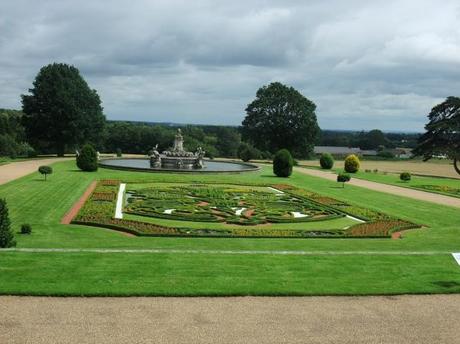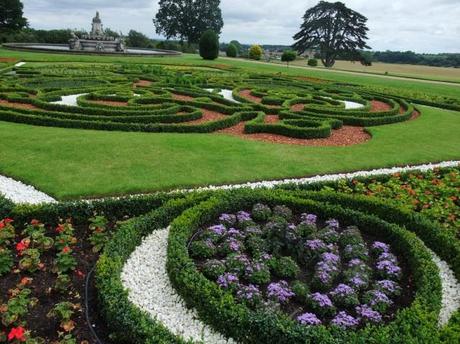
Earlier this week I posted about my visit to Witley Court, an English Heritage property and I mentioned that the gardens had been recently restored. As promised here they are.
The original parterres were designed by landscape architect
William Nesfield between 1854 and 1860. The parterre is designed to be seen from above, for example from the ballroom window, and is called ‘de broderie’ is because it is reminiscent of embroidery patterns. Parterres were very popular during the 18th century and Nesfield was often considered controversial due to his approach which often included a redirection of the Victorian approach and use of old ideas; such as the parterre.


Nesfield, like many landscape architects and garden designers of the past, has suffered from relative obscurity. However, just as Lancelot Capability Brown has become a household name, well amongst the visitors to National Trust properties, due to the restoration of his gardens, Nesfield is slowly beginning to become better known. The restoration of his Avenue Gardens in Regent Street in the 1990s prompted press interest and now that English Heritage has restored the gardens at Witley, completed in 2011, hopefully Nesfield’s cannon of work will start to get more acclaim.
Interestingly there is now some evidence that Nesfield was responsible for coining the expression ‘landscape architect’ as far back as 1849, long before the American Olmstead who the phrase is widely attributed to. If you are interesting in reading more on this then there is a fascinating article in Landscape History.
I have to say that parterres aren’t really my thing, they leave me a little cold but I find the historical side of the garden fascinating and it has led me to learn more about a landscape architect from the past. This is particularly interesting given my dabbling in landscape history earlier in the year which dealt with, at length, the 17th century parterres and landscape gardens and to my mind skipped far to quickly through the Victorian period, overlooking the likes of Nesfield.
My only criticism of the garden is that, as you can see, it is very hard to get a good view of and I wonder if there is any way English Heritage could supply some sort of viewing platform – just a thought.


